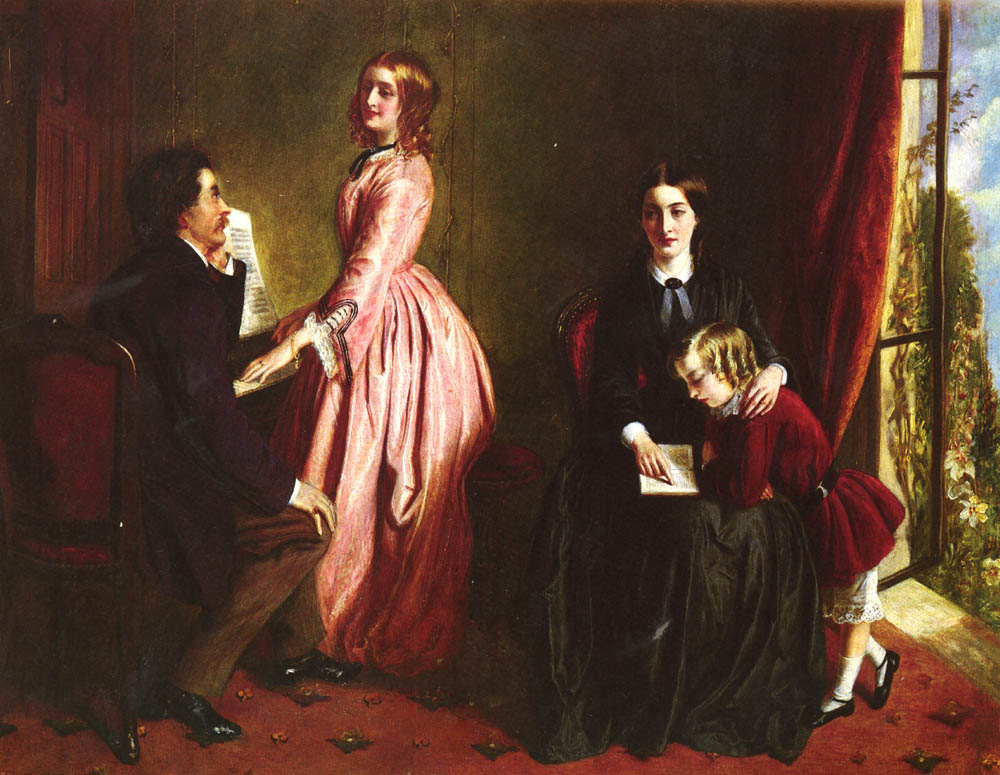 |
Hildegard of Bingen, Scivias
Hildegard receiving visions from God
|
Gender
roles have changed tremendously and continues to do so as our society moves
towards more progressive beliefs. However, it is important to note how and
where gender roles first began to predict where our beliefs will guide us. Women’s
roles of the middle ages revolved around being the wife and mother, or even
more simply, the nurturer. Women were designated as the nurturers because men,
specifically men who were not of nobility, worked the fields to provide for the
family, meaning someone else had to maintain the household. Some women in the middle
ages held positions of power, such as nuns in the church. The Roman-Catholic church
was one of the most powerful entities during the middle ages, arguably more
powerful than the King. The church also be an escape for a woman from the
humiliation of not being married. Being a nun was far better than not being
married. Nuns in the church were commendable because they were serving the ultimate
being, God, presumably being a man. One of the most powerful nuns was Hildegard
of Bingen who saw visions that were never questioned. Her status in the church
may have been higher than the Pope because of her “direct communication” with
God.
 |
| Rebecca Solomon's, The Governess, 1851 |
The Renaissance changed gender roles
slightly, but men still dominated all positions of power. During this period,
most areas of influence were being challenged, such as the system of Feudalism
and the Roman-Catholic church, ultimately making the middle-class more powerful.
Therefore, some positions that women may have held previously were losing
status in the public sphere. As a result, women were now solidified in the
private sphere known as “the home.” Since they were in the home, women were
still the nurturers, but they may have held higher domestic positions over
other women. For example, some women may work in the homes of other women,
usually as maids, seamstresses, and governesses while other women supervised
the household. Staying in the home meant having to find activities to occupy
one’s time. Such activities included painting, sewing, and playing an
instrument. Education was another area where only a few women had some access,
but not nearly the equivalent to males. For example, Chadwick says, “Even after
the loosening of restrictions on professional training, women faced obstacles
in obtaining art training equal to that of male students. [It was] widely believed
that too much book learning decreased femininity” (Women, Art, and Society p.175). Chadwick’s quote shows that men
still wanted to oppress and shackle women in the household. Should women obtain
enough education, whether in general or in art, men may feel threatened. Thus,
claiming that too much education will decrease femininity is a perfect example
of female manipulation. Accusing a person of not being who they are said to be
may be the most damaging statement. The 19th century proved for the
most improvements in gender roles for women. Women began to move out of the
household and finding work in factories, specifically textile mills. Furthermore,
unity among women began emerging, as well. Christian reform movements created
by women placed an emphasis on abolition of slavery, temperance, and women’s
suffrage, Chadwick citing the women as, “domestic feminists.”
 |
Harriet Powers, Pictorial Quilt, 1898
Depicting moments of slave life.
|
The middle ages, Renaissance, and 19th
century all affected women’s art. Since women were bound in the household
during the middle ages and Renaissance, most of female art may have considered
a “craft” rather than an “art.” For example, Chadwick explains, “The general
exclusion of women from highly professionalized forms of art production , like
painting and sculpture, and the involvement of large numbers of women in craft
production since the Renaissance, have solidified a hierarchical ordering of
the visual arts” (Women, Art, and Society
p.43). Chadwick’s quote explains the difference between the arts and crafts of
women. “Arts” can be described as a professional field complete with training,
education, and using a multitude of materials. “Art” mainly pertained to men.
“Crafts” pertain more to women and may be described as a hobby or a necessary
skill to have to create clothing or other amenities for the family. In other
words, gender roles not only existed between men and women, but within art
itself. The 19th century allowed women to incorporate their crafts,
such as needlework, into the workplace since the first wide-scale industrial
factories were textile mills. Subjects of art also changed throughout the time
periods. For instance, the middle ages contained subjects of holiness and
religion. The Renaissance focused on the struggles of women in their daily
lives of romance and domestic life. Finally, the 19th century placed
an emphasis on quilts that displayed heavy African-American influences of the
life in slavery. Overcoming the obstacles proved difficult for women but became
possible through unity. As Chadwick says, “faith in women’s abilities,
reflected the increasing public confidence that American women were displayed
during the 1870s and 1880s” (Women, Art,
and Society p.227). Perhaps our society should look back on past trends and
place an emphasis on unity within our current social classes.
- Aaron Gangadin
Works Cited:
Chadwick, Whitney. Women, Art, and Society. 5th edition, Thames & Hudson, October 12, 2012. Accessed: February 21, 2018
No comments:
Post a Comment